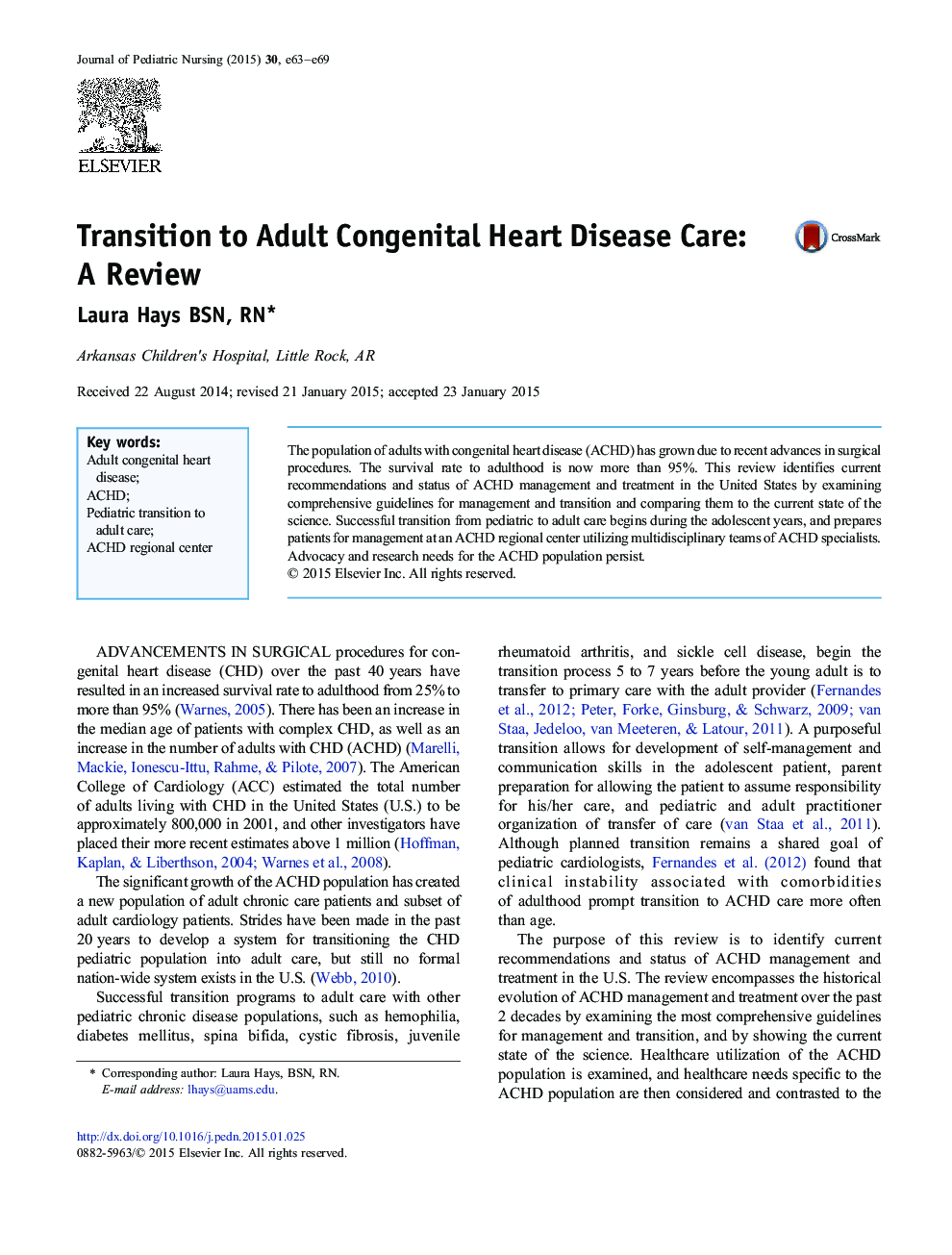| Article ID | Journal | Published Year | Pages | File Type |
|---|---|---|---|---|
| 2664260 | Journal of Pediatric Nursing | 2015 | 7 Pages |
•The significant growth of the adult congenital heart defect (ACHD) population has created a new population of adult chronic care patients and subset of adult cardiology patients.•The recommendations stemming from the American College of Cardiology 2000 Bethesda Conference are currently the most comprehensive guidelines for management and transition of ACHD and many of the goals remain unmet 14 years later.•Purposeful and successful transition from pediatric to adult care should include early education and preparation of the adolescent patient, structurally prepared ACHD regional centers, workforce training of multidisciplinary teams of ACHD specialists, and continued advocacy and research for issues specific to the ACHD population.
The population of adults with congenital heart disease (ACHD) has grown due to recent advances in surgical procedures. The survival rate to adulthood is now more than 95%. This review identifies current recommendations and status of ACHD management and treatment in the United States by examining comprehensive guidelines for management and transition and comparing them to the current state of the science. Successful transition from pediatric to adult care begins during the adolescent years, and prepares patients for management at an ACHD regional center utilizing multidisciplinary teams of ACHD specialists. Advocacy and research needs for the ACHD population persist.
